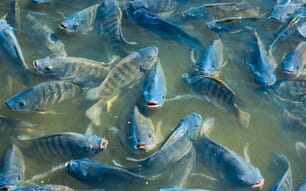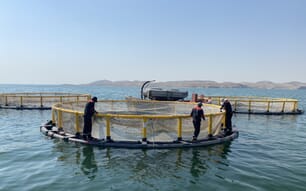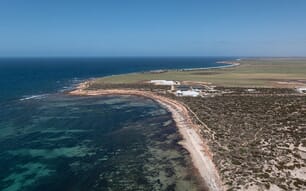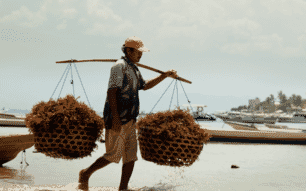The Agency has long been engaged in the development and promotion of silver pompano as an aquaculture species in the region. It started its venture on silver pompano in 2005 when Mr Hannibal Chavez, BFAR IVA-RFRDC Manager made initial inquiries and investigation on the status of the fish in the Philippines.
Silver pompano, Trachinotus blochii, is a high-value marine finfish that is relatively still new to the aquaculture sector but has been in the market as wild caught fish used as first class fillet in high-end restaurants. The fish is easily cultured, can easily be weaned to commercial feeds, can easily adapt to the culture environment, and the fish grow fast.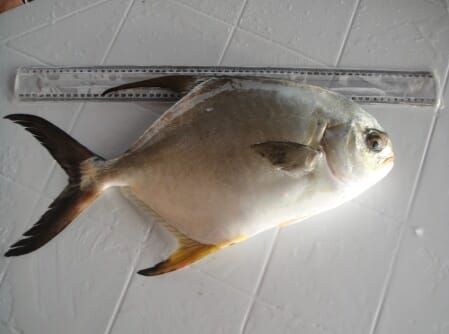
In 2007-2008, Mr Chavez conducted the research “Effect of Stocking Density on Growth Performance, Survival and Production of Silver Pompano (Trachinotus blochii, Lacepede) in Marine Floating Cages” at the Padre Burgos Mariculture Zone (PBMZ), Padre Burgos, Quezon where he established that the culture of pompano in cages is a very promising venture.
The highest production attained form the research was 1.05 tons at 30 fish/m³. After the successful research, technology demonstrations were conducted in Padre Burgos and at Perez Mariculture Zone in Perez, Quezon which were both successful and resulted in bountiful harvests.
Mr Chavez’s follow-up project was the “Broodstock Development of Pompano and Snapper in Cages” in 2012 as a support to the technology on pompano culture and to the Unisan Multi-species Hatchery.
The project was also conducted at the PBMZ using the 200 pieces marketable size set aside from the research conducted in 2007 and another 200 pieces from the techno-demo project conducted in 2008. The feeds used were reformulated and enhanced with vitamins C and E, and cod liver oil. The stocks were fed daily.
After five months of feeding with reformulated feeds, the pompano showed characteristics of matured broodstocks and on March 29, 2013, 40 broodstocks were transferred from PBMZ to the Unisan Hatchery.
The pompano started spawning naturally on May 23, without any hormones injected to it. It was the first ever recorded natural spawning of pompano at least among the BFAR regional offices. The total weight of eggs in the first spawning was 200g but only 50g were fertilized. The eggs hatched after 24 hours. A total of three spawning was recorded for the month of May 2013. This led Dr Chavez to conclude that pompano can be bred all year round as long as required nutrients are supplied.
BFAR IVA does not plan on stopping after this success in pompano breeding. Dr Chavez has started more research where he intends to establish hatchery protocols of silver pompano utilising low cost inputs and to improve its survival rate.
Another research campaign is on determining the appropriate size of pompano fry that can be transported or dispersed to clients and on the growout of fry into fingerlings in cages. The fry or fingerling stage is a sensitive part of the life cycle of a fish thus, it is important to determine the appropriate size of the fry or fingerling for transport. This is to enable the producer to prepare the proper transport procedures to avoid mass mortality of the fry and to avoid degradation in quality.

